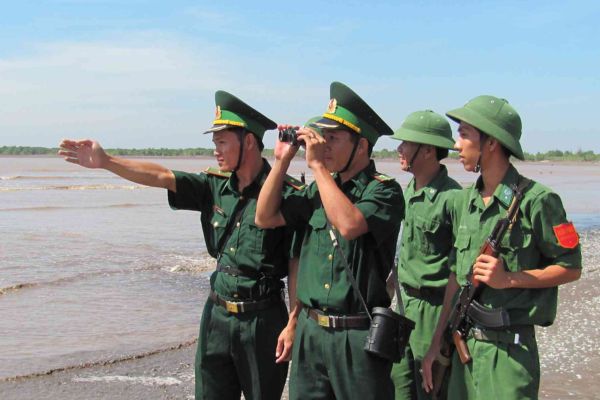Determining the Scope of Prohibited Areas and Protection Areas of Defense Works and Military Zones
How to Determine the Prohibited and Protected Areas of National Defense Works and Military Zones?
According to Clause 1, 2 Article 17 Law on Management and Protection of National Defense Works and Military Zones 2023, the prohibited and protected areas of national defense works and military zones are determined as follows:
The prohibited area boundaries of national defense works and military zones are determined based on each type, group, management and protection requirements, location, terrain conditions, and population where the national defense works, military zones are located, and are regulated as follows:
- The prohibited area boundaries of national defense works are determined according to the boundaries of land use, water surface, and the extension from these boundaries around. The extension is determined according to each type, group of national defense works not exceeding 55 meters on the ground, 500 meters on the water surface;
- The prohibited area boundaries of the military zone are determined according to the boundaries of land use, water surface of the military zone, or the air space of the military zone when established in the air;
- The prohibited area boundaries underground, underwater, and in the air of national defense works and military zones are determined according to the vertical line from the prohibited area boundary from the ground, water surface to unlimited depth, up to a height not exceeding 5,000 meters in the air;
- The prohibited area boundaries are depicted on maps, charts, and the field; with walls, fences, trenches, or markers, signs, buoys to determine the boundary.
The protected area boundaries of national defense works and military zones are determined from the boundary of the prohibited area outward a certain distance according to each type, group, depicted on maps, charts, and the field, with markers, signs, buoys to determine and regulated as follows:
- The distance from the boundary of the prohibited area outward of national defense works and military zones Group particularly not exceeding 600 meters, Group I not exceeding 300 meters, Groups II and III not exceeding 200 meters;
- For national defense works ensuring various types of weapons, the protected area boundaries are determined according to the tactical, technical features, ensuring it does not affect the effectiveness of each type of weapon.

How to determine the prohibited and protected areas of national defense works and military zones? (Image from Internet)
How to Determine the Safety Belt Boundaries of Ammunition Depots?
According to Clause 4 Article 17 Law on Management and Protection of National Defense Works and Military Zones 2023, the safety belt boundaries of ammunition depots are determined as follows:
The safety belt boundaries of ammunition depots are determined from the inner limit outward around with a distance equal to the safety radius depicted on maps, charts, and the field, with markers, signs, buoys, or separating trenches determined and regulated as follows:
- The inner limit of the safety belt of ammunition depots is no more than 55 meters from the base line of the ammunition depot; for ammunition depots under the authority of the district military command or equivalent, the inner limit coincides with the base line;
- The safety radius is determined based on the level of the ammunition depot; the quantity, storage volume of various types of ammunition, explosives stored in the depot calculated, converted into TNT equivalence. The safety radius of ammunition depots of Group I and Group II ranges from 1,200 meters to 1,500 meters; the safety radius of ammunition depots of Group III ranges from 800 meters to 1,000 meters; for ammunition depots under the authority of the district military command or equivalent ranges from 14 meters to 800 meters;
- In case there are terrain features or shields around the ammunition depot meeting technical requirements, the safety radius specified at point b of this clause can be reduced but not exceeding 50%;
- The safety belt boundaries of ammunition depots underground, underwater, in the air are determined according to the vertical line from the outer limit of the safety belt on the ground, water surface to unlimited depth, up to a height not exceeding 5,000 meters in the air.
How to Determine the Safety Corridor Boundaries of Military Antenna Systems According to the Technical Features of Each Military Antenna System?
According to Clause 5 Article 17 Law on Management and Protection of National Defense Works and Military Zones 2023, the safety corridor boundaries of military antenna systems are determined according to the technical features of each military antenna system as follows:
- The safety corridor of communication antenna systems is 2,000 meters; technical reconnaissance antenna systems is 3,000 meters; radar antenna systems and electronic warfare antenna systems is 5,000 meters;
- Obstacles to antennas within the safety corridor of military antenna systems must be at least a minimum distance from the outer edge of the military antenna system to not affect the operation of the military antenna system; the minimum distance is determined based on the technical features of each antenna system, characteristics of the antenna obstacle.
Law on Management and Protection of National Defense Works and Military Zones 2023 will take effect from January 1, 2025.
LawNet